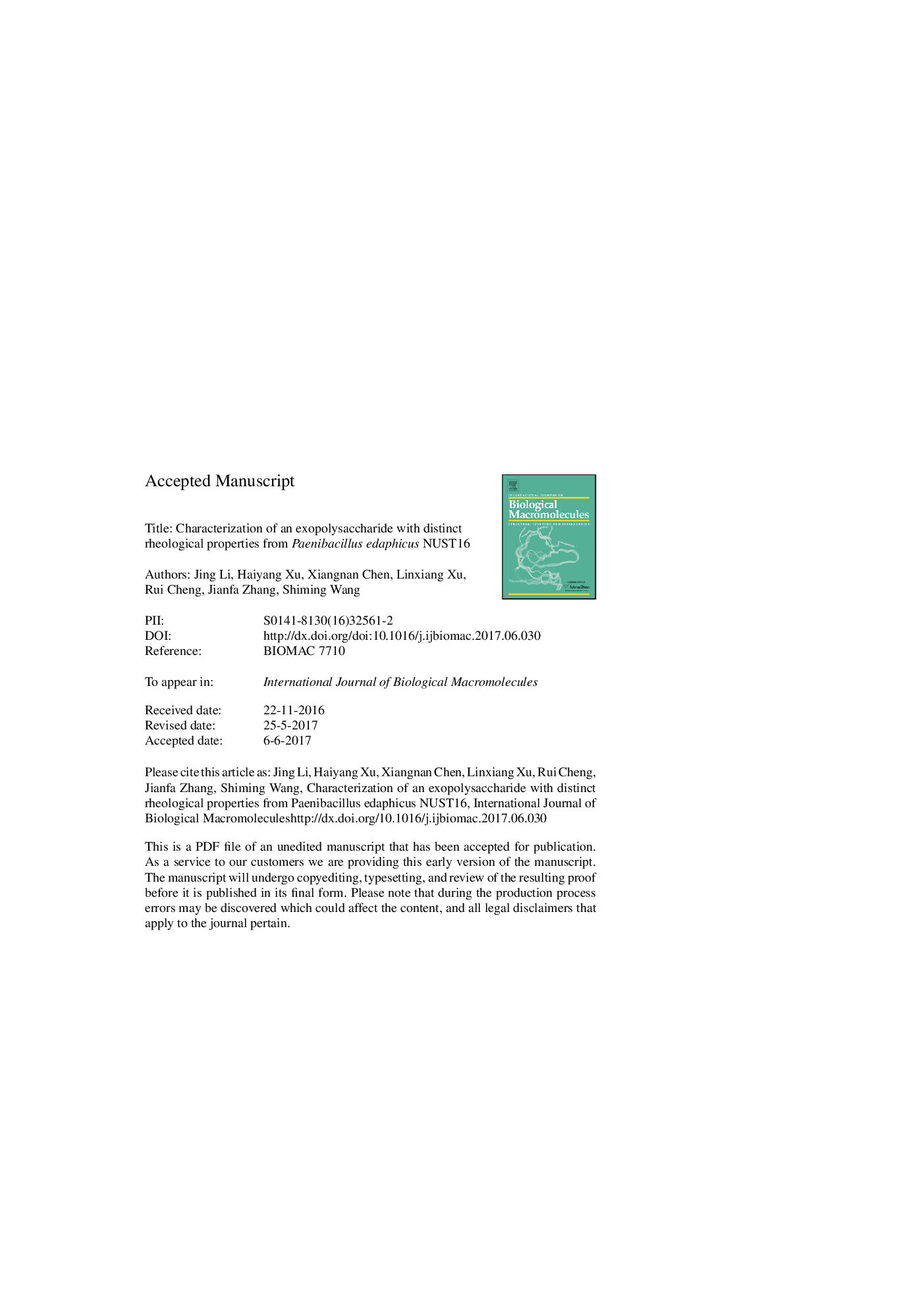| Article ID | Journal | Published Year | Pages | File Type |
|---|---|---|---|---|
| 8329267 | International Journal of Biological Macromolecules | 2017 | 27 Pages |
Abstract
Microbial exopolysaccharides (EPSs) have been commercially used for decades owing to their distinct rheological properties. New EPSs with special traits are being explored continuously. The strain Paenibacillus edaphicus NUST16 was isolated in this study. NUST16 produces 12.5 g/L EPS after 72 h cultivation in shaker flask. Moreover, the purified EPS, POS16, has the molecular weight of 1.2 Ã 107 Da and consists of five types of glycosides, namely, D-Glc, D-Man, L-Fuc, D-GlcA, and D-Gal. Methylation, NMR, and FT-IR results indicate that three glucosides and three mannosides make up the main chain of POS16 via 1 â 3 linkage. The Gal(1 â 3)Fuc(1 â 3)Fuc(1â and GlcA(1â branches link to the C6 positions of two mannosides, respectively. The other mannoside is partially derivatized by the acetyl group at C2 position. Rheological analysis shows that POS16 has typical shear-thinning pattern which fits the Hershel-Bulkley model well. More importantly, POS16 shows ideal saline tolerance as the apparent viscosity keeps high in solutions containing 100 g/L salts, such as NaCl, KCl, MgCl2, and CaCl2. Furthermore, POS16 behaves more viscous than xanthan gum and sodium carboxymethylcellulose in divalent ion solutions. The results suggest that POS16 is a potential rheological modulator that can be used in operations where high concentrations of salts exist.
Keywords
Related Topics
Life Sciences
Biochemistry, Genetics and Molecular Biology
Biochemistry
Authors
Jing Li, Haiyang Xu, Xiangnan Chen, Linxiang Xu, Rui Cheng, Jianfa Zhang, Shiming Wang,
